Introduction to fan testing
The introduction to this article has been rewritten several times. The original versions resorted to describing the adverse events that caused the long-announced fan testing to be so dramatically delayed. But the text was always dreadfully boring… the important thing is that everything managed to make it to the start. But before the starting gun, come take a thorough walk around the track where the measurements will take place.
One retrospective remark at the beginning is in order. Our magazine was once created to focus on cooling of computer components. And while that quickly proved to be utopistic and it was necessary to take on a slightly more comprehensive focus to survive, that doesn’t change our love of cooling. We believe that the work on fan test methodology, which we will discuss in detail in the following lines, is proof enough of this.
However, we must warn you right away that you will need to set aside more time for this article. If you don’t have half an hour now, that’s okay, you’ll find it later. Bookmark the article and then come back to it at your convenience. The typical pattern of behavior where most readers skip right to the final chapter won’t work here. To make sense, you have to read through everything. Because from the first chapter to the last, things will build on each other. It’s probably best to go through the tunnel (and the periphery around it) from entrance to exit. Every little detail is extremely important, and we’ll be happy if you understand everything we do perfectly. Such knowledge will also be key to reading the results you’ll be encountering for a long time on HWCooling.net.
Testing fans really accurately is an extremely difficult task. Without further context, this may sound like a cliché, but we believe that after reading the last sentence of the methodology, you will agree with this statement. The fan testing idea also came about because we could not find anything on the internet that even remotely resembled what we expect from fan testing.
Of course, there are quite a few tests of fans on heatsinks or in computer cases everywhere. But these mostly don’t actually go after the parameters that the fans have (that is mainly airflow and static pressure) and only deal with temperature comparisons within a cooling system. Measuring with which fan lower or higher CPU or GPU temperatures are achieved is indeed better than nothing, but it is always an emergency solution for a rough orientation. And sometimes even that rough orientation can be misleading.
In short, the variability of different coolers and different cases is so great that what is true in the configuration within test setup “A” may not be true for other test setup “B” components. In fact, the rest of the cooling system, which is the passive heatsink or the specific layout of the elements in the case, also contributes significantly to the result and the relative ratios that express higher or lower cooling performance. Differences when testing in a natural environment must therefore be taken with a grain of salt, and you must also take into account that everything may work slightly differently in your setup.
Therefore, it is always better, more accurate and more precise to test the fan separately. However, this requires a specialized set-up in which such measurements can be made. Typically some kind of tunnel that has an input and an output. You have probably already encountered some such units in various tests. We are aware of them too, but they are all missing something, and within their design, despite increased efforts, we can see many flaws and often untapped potential. That said, the tunnel is pretty decent, but one is not getting the most out of it. Pointing to any specific cases from here is not really appropriate, so let’s move straight on to what a test tunnel (a tunnel with the HWCooling logo!) should look like and a methodology that reveals everything about the fans.
You already know the prototype of the wind tunnel we are going to talk about from last year’s article. The difference is that over the last year we have fine-tuned it to the final form in which we will use it to test the fans. A year ago, we described how we would probably measure the different quantities. We’ll recap that now, but we’ll change the sequence a little bit. We’ll start not with the airflow measurements, but with how important the fan mounting itself is. So we’ll take it from the beginning (from the fan) all the way to the end of tunnel.
- Contents
- Introduction to fan testing
- Basis of methodology, the wind tunnel
- Mounting and vibration measurement
- Initial warm-up and speed recording
- Base 7 equal noise levels...
- ... and sound color (frequency characteristic)
- Static pressure measurement…
- ... and airflow
- Everything changes with obstacles
- How we measure power draw and motor power
- Measuring the intensity (and power draw) of lighting
- Eight “basics” to start off…





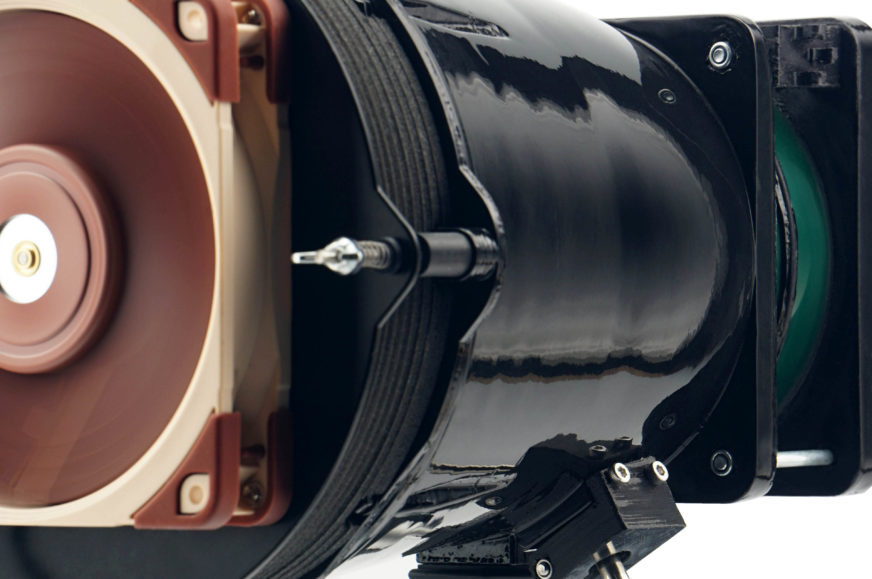
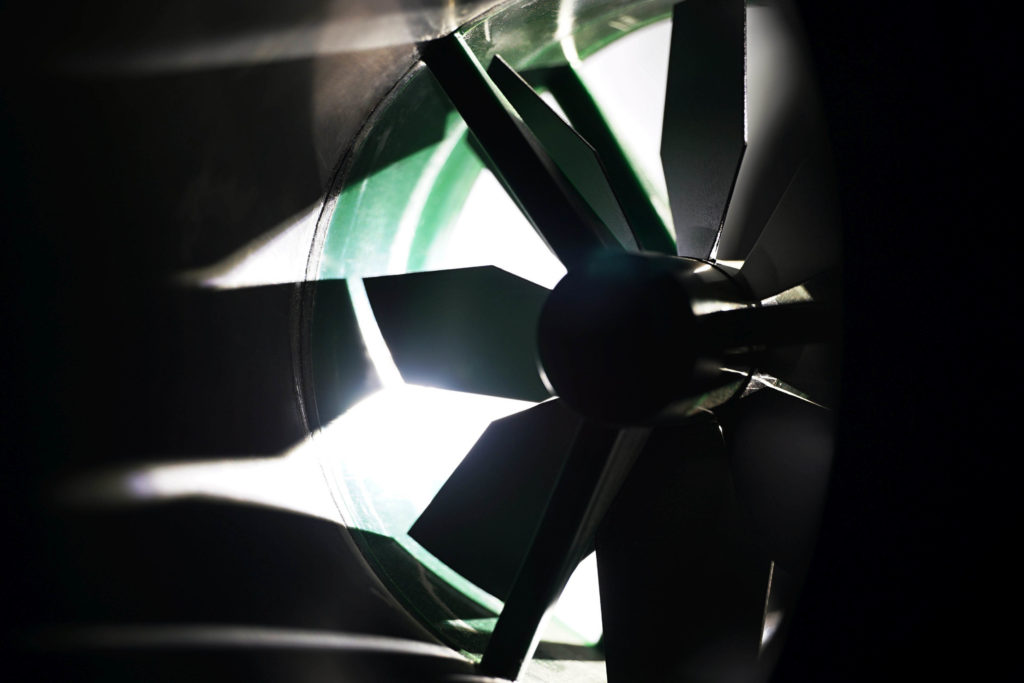
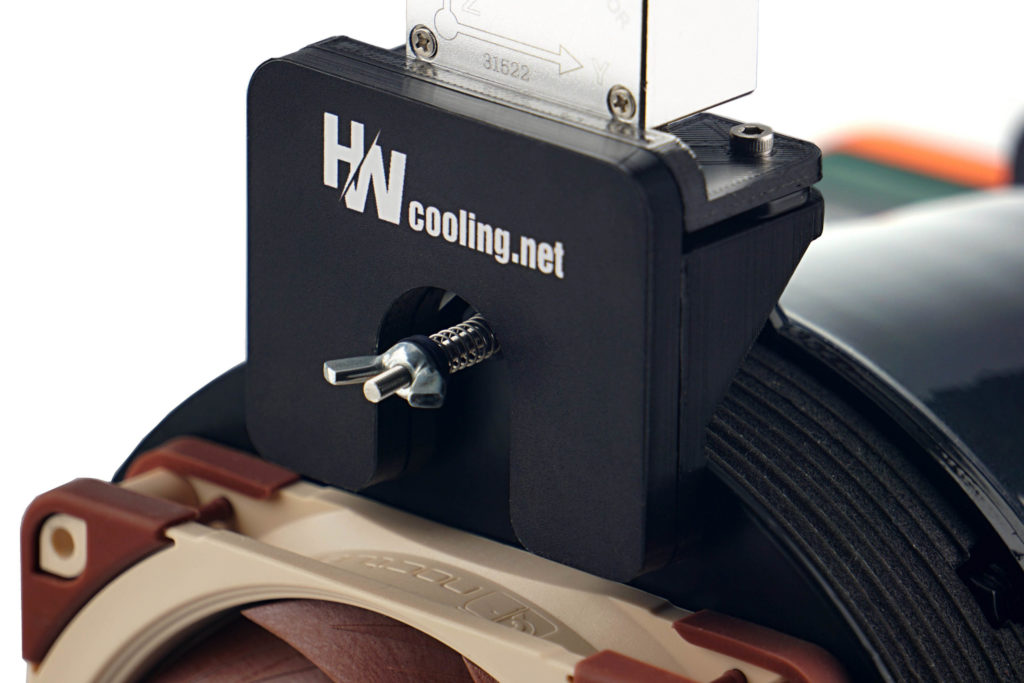
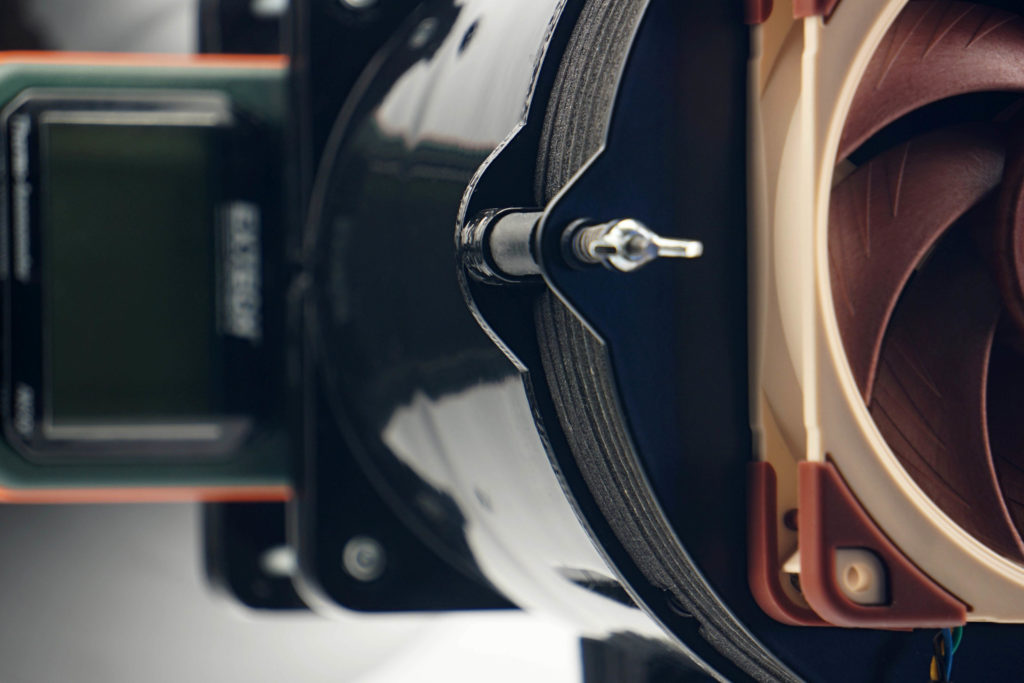
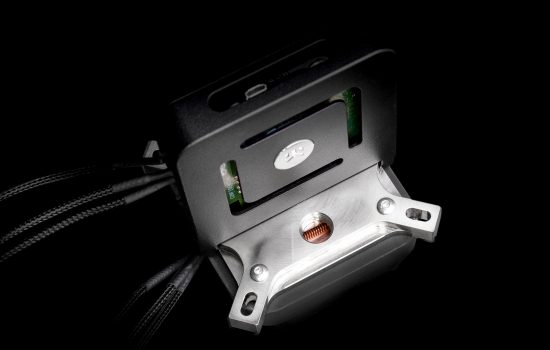
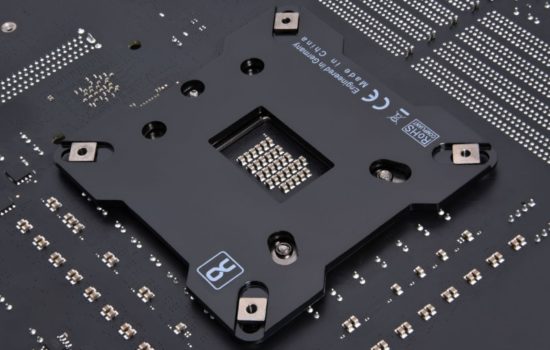




Have you tried PWM controllers other than the Noctua NA-FC1? Does the NA-FC1 offer some advantages over other (often much cheaper) controllers?
We tried our own solution, our own PWM controller. But it was rather clumsy and the only disadvantage of NA-FC1 is that it is not possible to read a numeric value from it. And maybe the fact that it has a narrower rotation range. As long as it is powered by a laboratory power supply, it does not reduce the sensitivity of the exact setting (and what needs to be set can always be fine-tuned in units of mV on the power supply). I have no experience with other off-the-shelf PWM controllers, nor did I know there were any. All PC speed controllers I have used in the past only supported DC control. I have probably the most experience with Scythe Kaze Master Pro and Lamptron Touch. 🙂
Hi,
Could you please clarify the flow in the pull position?
I’m referring to measuring the airflow in a pull fan configuration.
Yes, thanks for asking. Schematically this is the model:
The airflow guide is on the opposite side of the tested fan. This design is the result of several years of research in which we compared different tunnel concepts and in the end we evaluated this design as the most accurate and the most objective. Different tunnels have different problems, for which some fans are relatively advantageous, but others are disadvantageous. This topic is not suitable for a comment below an article, a whole book could be written about it. And we will write it as well, but everything in its time. Some of the wording and details in the methodology are deliberately such that someone cannot adopt it 1:1. We wanted to avoid such a risk, because it would put us at a considerable disadvantage if many things were considered a “good idea” even by someone with significantly better marketing than we have.
But we are slowly approaching the stage when we will be able (our two-year work on tests will not be surpassed :)) to go into details (and also, if I can find the space for it, I would like to revise the overall documentation for the test methodology) and on the basis of the results of our own experiments to analyze in detail why our design is more relevant for the evaluation of fans than the traditional designs with long ducts with a grilled airflow guide. Even a detail such as the orientation of the fan to the tunnel can significantly distort the perspective of the evaluation. When measuring the noise of fans on a tunnel, its walls (tunnel walls), compared to free space, increase the noise of each fan differently. There is a more detailed discussion on this in this thread actually. But these are all things that require reviews of different tunnels with different fans under different conditions to understand sufficiently. We have these data and sooner or later we will certainly process them and publish them in a series of popular-style articles. I can’t promise to do it right away, because it will be a lot of work, which will be commercially inefficient. And serious magazines that want to survive and are based on in-depth reviews don’t have much room for that. But we will certainly get there. It is necessary to start off gently, so that people can understand elementary things/phenomena sufficiently. The design analysis of individual elements in the test tunnels is a more complex topic for the true fan enthusiasts, of which there are only a few, unfortunately. The interest must be always more widespread for the work to make sense financially. With this, we will definitely go financially into the negative, the efficiency in this direction will be low, but we count with it and we have to plan everything properly. Particularly since the series of articles on this subject will be extremely laborious, it is a very demanding topic. Especially if the form of processing is to be understandable even for laymen.
The orientation of the air flow through the tunnel need not interest you at all. With regard to the design of the test tunnel, it is chosen with a view to achieving sufficient laminar flow wherever it is necessary for objective measurements. It has nothing to do with the orientation of the fan on the obstacle. Differences in this respect are shaped primarily by the degree of imperfection of the test system. If someone gets lower airflow on push, it is mainly because the nature of the airflow is more turbulent at the point of dynamic pressure measurement.